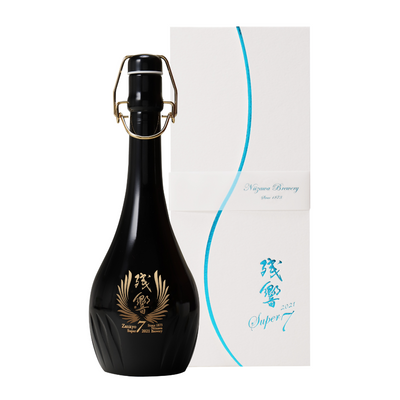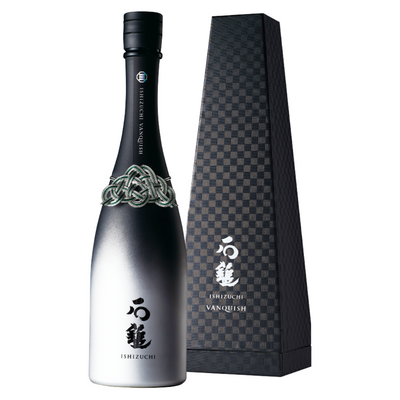Part 4: How is Sake classified?
There are two main categories of sake, premium sake (Tokubetsu Meishoshu) which comprises about ⅓ of the national production, but is increasing, and basic sake (Futsushu) making up about ⅔ of the national production.
Premium Sake
Though it makes up a small percentage of the overall market, premium sake is what you will find in most decent izakayas and other restaurants, as well as sake shops. The list of allowed ingredients is short, and besides the required rice, koji and water comprise only the optional distiller’s alcohol as well as yeast and lactic acid.
There are a lot of different variations of premium sake, but only eight main ones and these are clearly differentiated by two aspects, the polishing rate and whether brewer’s alcohol is added or not.
Ginjo and Daiginjo
These are what are often considered the cream of the crop, sought-after sakes that are pleasant and easy to drink, highly fragrant, and usually expensive. They are generally light in body and acidity, are dominated by fruity aromas, and have only been around since the middle of the last century, when the Ginjo-production method was invented in Hiroshima.
There are two reasons that these sakes are more expensive; one, because a lot of rice has been polished off, and two because the way of brewing Ginjo (at a lower temperature and with more precision required) is more intricate and difficult than other sake. For Ginjo, the rice-polishing rate must be 60% or lower (40% of the rice removed). For Daiginjo (or “big” Ginjo), the rice-polishing rate must be 50% or lower (though it can go as low as 20% or even lower, with one brewery achieving a 0,8% polishing rate, meaning 99,2% of the rice removed). Daiginjo and Ginjo are similar, though Daiginjo is more aromatic and flavorful and even lighter in body and acidity.
Junmai
Often, after sake is brewed (but before it is filtered), a small amount of highly distilled alcohol is added. This helps extract more flavor from the remaining rice but at the same time gives a lighter body to the sake. If this is not done and only rice is used then the sake is a Junmai sake. Whether one prefers Junmai or not is a matter of personal preference.
Important to know is that there are Junmai versions of Ginjo as well. A sake merely market Junmai can have any polishing ratio (even be unpolished) but a Junmai-Ginjo still needs to have a 60% polishing ratio and a Junmai-Daiginjo a 50% polishing ratio.
Honjozo
Honjozo is a sake with a polishing ratio of at least 70% and with added brewer’s alcohol. The step from 60% to 70% might not seem like much, but since Ginjo-type sakes usually have a different brewing process, the resulting sake also tastes quite different. Different is not worse, however, and there are great Honjozo varieties available. Also interesting to note is that until the middle of the 20th century, most sake brewed did not have a polishing ratio of less than 70%, simply due to the fact that the polishing technology was not advanced enough.
Basic Sake
Basic sakes have much fewer restrictions in their ingredient list. While the same components (rice, koji, water) must be used, additives such as sugars and organic acids are also allowed, in order to bring down the price and increase the yield. These are the sakes that are served piping-hot in inexpensive restaurants.
Because sake breweries, especially smaller craft breweries, are becoming more experiential and are pushing the boundaries of sake, there are some gems to be found among basic sake. These can be very intense, or even wine-like, with raging acidity and a great body. As with most things, a simple label is not enough to completely definite what’s inside the bottle, but you can trust us that if we feature a basic sake it will be something special.
Other Sake Types
A product as ubiquitous and traditional as sake will inevitably have many other variations, some of which we’ll quickly get into here. Note that these are not mutually exclusive and can be combined with earth other and the above sake types:
- Kimoto/Yamahai: refers to a traditional method where lactic acid is created naturally rather than added. These sakes have a lot of character and are usually full-bodied. Yamahai also often is intentionally oxidized, though that is not a requirement of the process.
- Nigori: cloudy sake that has only been lightly filtered
- Muroka: sake that has not been charcoal filtered, and will be yellowish in color
- Nama: unpasteurized sake or sake that has only been pasteurized once (instead of the usual two times)
- Genshu: sake undiluted with water. Usually, but not always, a bit stronger in alcohol and taste
- Koshu: aged sake. This can be anywhere from 3 to 30+ years
- Sparkling: carbonated sake made either with a second bottle fermentation or through the addition of carbon dioxide
- Kijoshu: sweet sake produced by a special production method
- Taru-Zake: sake that is stored in cedar (wooden) barrels for a short period of time and thus acquires the cedar wood’s taste




